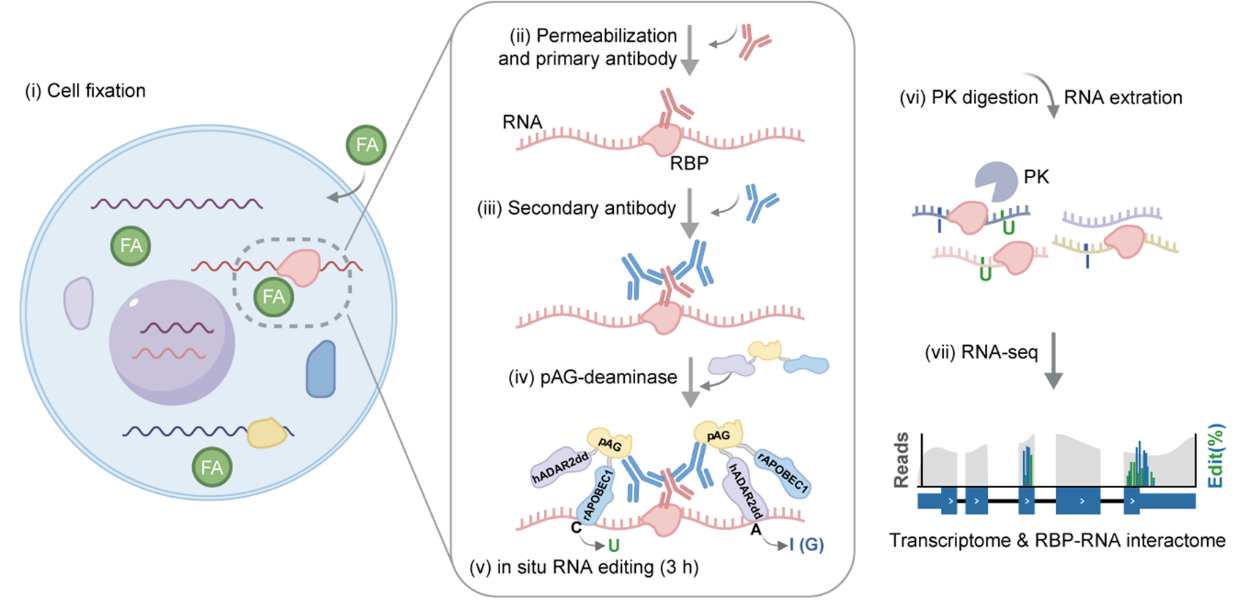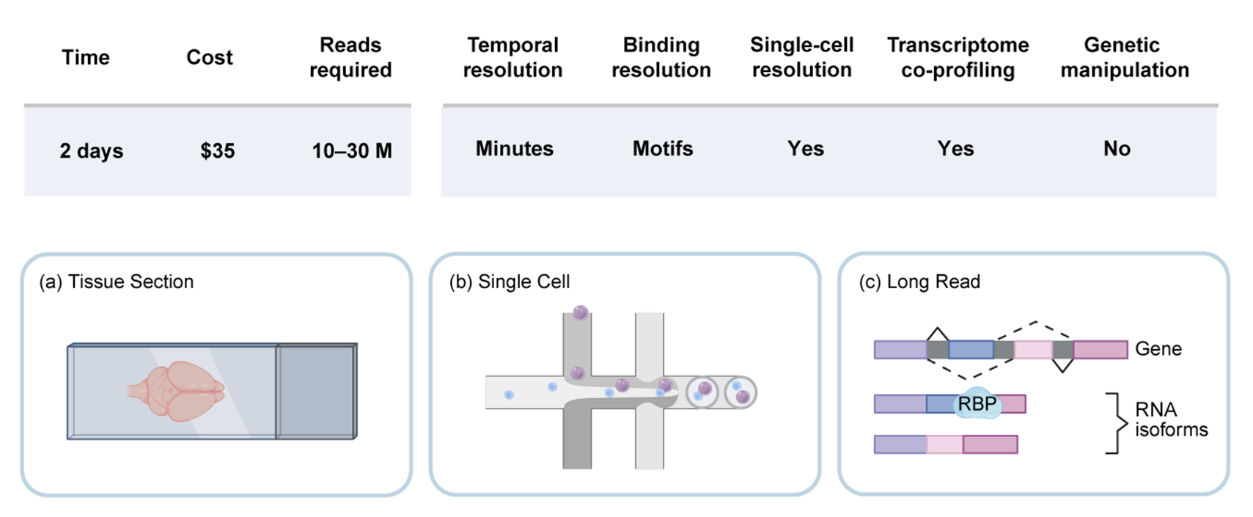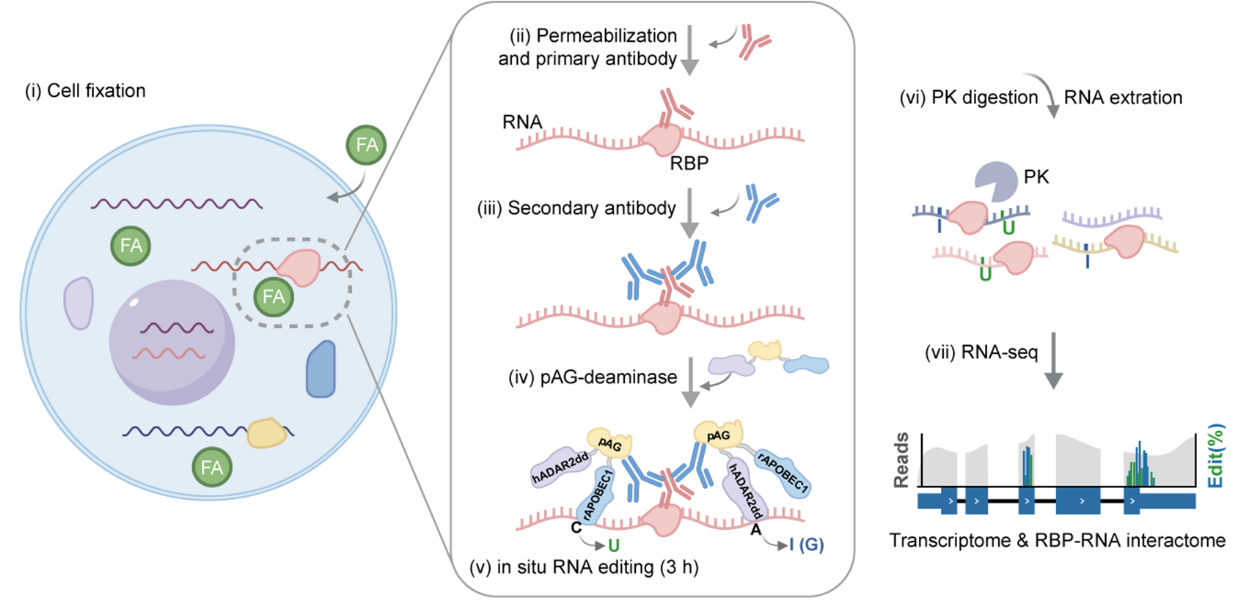Beijing, August 11, 2025 — A research team led by Professor Yangming Wang from the Institute of Molecular Medicine, College of Future Technology, and the Beijing Advanced Center of RNA Biology (BEACON) at Peking University has published a landmark study in Nature Methods titled “Co-profiling of in situ RNA-protein interactions and transcriptome in single cells and tissues”. Read the full article here: https://www.nature.com/articles/s41592-025-02774-4
Quick Overview (What is MAPIT-seq in 3 points)
1. What it does: Captures both RNA–protein interactions and the full transcriptome from very small or preserved samples.
2. Why it matters: Works without genetic engineering, works in fixed or frozen tissues, and offers single-cell and long-read resolution.
3. What’s next: The team aims to integrate it with spatial transcriptomics for high-resolution mapping of RNA-binding proteins in organs.
Breaking Through Technical Barriers
MAPIT-seq (Modification Added to RBP Interacting Transcript sequencing) is an innovative method that simplifies how scientists study RNA-binding proteins (RBPs)—key regulators of RNA splicing, stability, movement, and translation, and vital to processes like stem cell development, neural function, and cancer1. Traditional methods are often slow, require large samples and complex steps, and lack the ability to capture both interactions and transcriptome data at high resolution.
How It Works
MAPIT-seq uses an “antibody plus RNA editing” strategy: antibodies guide a fusion protein containing two RNA editors—ADAR and APOBEC1—to RBP-bound RNAs. These editors leave clear signals near binding sites within hours, which are then identified by sequencing (Figure 1).
No genetic engineering required
Works with fixed cells and frozen tissues
Enables simultaneous mapping of RNA–protein interactions and full-transcriptome profiling

Figure 1. Schematics of MAPIT-seq
Demonstrated Strengths Across the Board
The technology showed robust performance in multiple contexts:
Detected interactions at sequencing depths similar to standard RNA-seq—efficient and reliable.
Uncovered targets, binding motifs, and regulatory features of RBPs like YTHDF2, RBFOX2, PTBP1, and PUM1.
Mapped G3BP1 binding during fetal brain development in mouse tissues—offering fresh insights into neurological roles.
When combined with the 10x Genomics single-cell platform, it enabled dual profiling of RBP binding and cellular states, revealing how targets change across the cell cycle.
Integration with PacBio long-read sequencing added isoform-level resolution—clarifying how RBPs regulate different RNA variants.
A Toolkit Built to Grow
MAPIT-seq comes in three adaptable versions tailored to different sample types and sequencing setups (Figure 2). Its genetic engineering–free design opens doors for primary tissue and clinical studies, while its high-resolution capabilities push RBP research into single-cell and isoform-specific territories.
Looking ahead, the team plans to:
Integrate MAPIT-seq with spatial transcriptomics,
Expand the enzyme toolbox and data analysis pipeline,
Map RBP dynamics with fine spatial and base resolution in complex organs,
Accelerate applications in disease research, drug target validation, and translational medicine.

Figure 2. Overview of MAPIT-seq features and applications.
Meet the Team & Acknowledgments
Corresponding author: Professor Yangming Wang (College of Future Technology & Beijing Advanced Center of RNA Biology-BEACON, Peking University)
Co–first authors: Qixuan Cheng (Institute of Molecular Medicine, College of Future Technology, Peking University) and Gang Xie (Academy for Advanced Interdisciplinary Studies, Peking University)
Contributors: Professor Junyu Xiao, Xiangyu Zhang, Jie Wang, Shuangjin Ding, Yixia Wu, Ming Shi, Dr. Feifei Duan, Zili Wan, and Jingjia Wei
Funding: Supported by the National Key Research and Development Program of China and the National Natural Science Foundation of China
Notes to Readers
Broad potential: Since MAPIT-seq works without genetic modification, it has the potential to be used in a wide range of organisms, including bacteria, plants, fungi, and animals.
Accessible innovation: The researchers hope to make RBP studies accessible to a broad range of scientists—including those new to the field.
Choose what fits: Other methods like CLIP, STAMP, TRIBE, RT&Tag, ARTR-seq, and INSCRIBE remain valuable, each with unique strengths2-5—researchers should choose based on their specific goals.
For More Reading
1.Gebauer, F., Schwarzl, T., Valcarcel, J. & Hentze, M.W. RNA-binding proteins in human genetic disease. Nat Rev Genet 22, 185-198 (2021).
2.Hafner, M. et al. CLIP and complementary methods. Nat. Rev. Methods Primers 1, 20 (2021).
3.McMahon, A.C. et al. TRIBE: Hijacking an RNA-Editing Enzyme to Identify Cell-Specific Targets of RNA-Binding Proteins. Cell 165, 742-753 (2016).
4.Xiao, Y. et al. Profiling of RNA-binding protein binding sites by in situ reverse transcription-based sequencing. Nat Methods 21, 247-258 (2024).
5.Liang, Q. et al. High-sensitivity in situ capture of endogenous RNA-protein interactions in fixed cells and primary tissues. Nat Commun 15, 7067 (2024).

